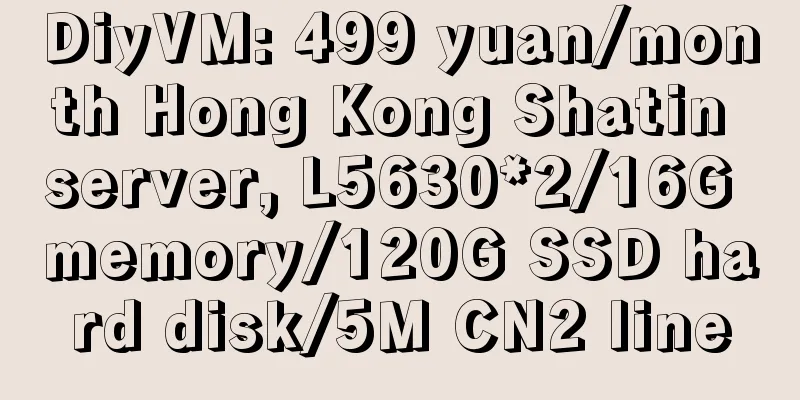A brief analysis of RoCE network technology

|
In the era of data being king, people have more stringent requirements on the network. However, traditional TCP/IP Ethernet connections occupy a lot of CPU resources and require additional data processing, which can no longer meet the current demand for faster, more efficient and scalable networks. In this case, RoCE (RDMA over Converged Ethernet) has come into people's view. What is RDMA?RDMA (Remote Direct Data Access) was created to solve the delay of server-side data processing during network transmission. It allows direct access from the memory of one host or server to the memory of another host or server without using the CPU. It frees up the CPU to perform its work, such as running applications and processing large amounts of data. This not only increases bandwidth but also reduces latency, jitter, and CPU consumption. Therefore, RDMA can be simply understood as using related hardware and network technologies so that the network card of server 1 can directly read and write the memory of server 2, ultimately achieving the effects of high bandwidth, low latency, and low resource utilization. As shown in the figure below, the application does not need to participate in the data transfer process. It only needs to specify the memory read and write addresses, start the transfer and wait for the transfer to complete. Currently, there are roughly three types of RDMA networks, namely Infiniband, RoCE, and iWARP. Among them, Infiniband is a network designed specifically for RDMA, which guarantees reliable transmission from the hardware level, while RoCE and iWARP are both based on Ethernet RDMA technology and support corresponding verbs interfaces. What is RoCE?As the name suggests, RoCE is a network protocol defined in the InfiniBand Trade Association (IBTA) standard that allows the use of RDMA over Ethernet networks. In short, it can be seen as the application of RDMA technology in hyper-converged data centers, clouds, storage, and virtualization environments. Types of RoCE There are two versions of the RoCE protocol: RoCEv1 and RoCEv2, depending on the network adapter or network card used.
How to implement RoCE? Typically, to implement RoCE, you can install a network card or card driver that supports RoCE. All Ethernet NICs require a RoCE network adapter card. RoCE drivers are used in Red Hat, Linux, Microsoft Windows, and other common operating systems. There are two ways to use RoCE: for network switches, you can choose to use a switch that supports PFC (priority flow control) operating system; for rack servers or hosts, you need to use a network card. Benefits of RoCE
Frequently Asked Questions about RoCEListed below are some frequently asked questions about RoCE. 1. Technical comparison between RoCE, iWARP, and InfiniBand RDMA was first implemented on the Infiniband transmission network. It is an advanced technology but expensive. Later, industry manufacturers transplanted RDMA to traditional Ethernet, which reduced the cost of using RDMA and promoted the popularization of RDMA technology. On Ethernet, according to the difference in the degree of integration of protocol stacks, it is divided into two technologies: iWARP and RoCE. RoCE includes two versions: RoCEv1 and RoCEv2 (the biggest improvement of RoCEv2 is the support for IP routing). The comparison of various RDMA network protocol stacks is shown in the following figure.
RoCE and iWARP, one is based on the connectionless protocol UDP, and the other is based on a connection-oriented protocol (such as TCP). RoCEv1 can only be limited to a layer 2 broadcast domain, while RoCEv2 and iWARP can support layer 3 routing. Compared with RoCE, in the case of large-scale networking, iWARP's large number of TCP connections will occupy a large amount of memory resources and have higher system specifications. In addition, RoCE supports multicast, while iWARP has no relevant standard definition. 2. Can a RoCE adapter communicate with other adapter types (e.g. iWARP)? RoCE adapters can only communicate with other RoCE adapters and may revert to traditional TCP/IP connections if mixed adapter types are configured, such as a RoCE adapter combined with an iWARP adapter. in conclusionRunning RDMA in the data center can reduce the burden of data movement and provide higher CPU resource availability to applications. The RoCE protocol can benefit from the capabilities of RDMA without changing its network infrastructure. By reducing Ethernet latency and CPU overhead, RoCE can improve the performance of search, storage, database, and high transaction rate applications. By improving CPU efficiency and application performance, RoCE can reduce the number of servers required, thereby saving energy and reducing the footprint of Ethernet-based data centers. |
<<: Is it necessary to upgrade from 4G to 5G mobile phone now?
>>: Outlook for domestic 5G development in 2021 (Part 3): Opportunities
Recommend
Interpretation of H3C's future industrial layout in the 5G era
One of the most important exhibitions of the year...
The three major operators are about to adjust, and the low standard of 5G tariffs is coming, and both new and old users have opportunities
2019 can be said to be the first year of 5G base ...
Giants compete for dominance in cloud computing! What new changes will 5G and the epidemic bring?
Following personal computers and the Internet, cl...
2020 China Computer Education Conference: Building a University Computing Talent Ecosystem with an “Intelligent Base”
[51CTO.com original article] From December 18 to ...
The Heart of Smart Devices: Understanding Semiconductor Sensors
At the heart of smart devices lies a complex worl...
Regarding 2G network withdrawal, this article can be said to be very comprehensive
The withdrawal of 2G network is actually not a ne...
Why is your broadband speed never as fast as your operator says?
According to some users, in order to improve the ...
DogYun's new Hong Kong MG VPS starts at 70 yuan per year, 1GB memory/20G SSD/1TB monthly traffic
DogYun (狗云) Classic Cloud Server has a new Hong K...
From "manufacturing" to "intelligent manufacturing", how Qingdao Kute achieved a brilliant transformation
[51CTO.com original article] Enterprise digital t...
Powered by EMUI 9.1, Huawei Enjoy 10S brings users a brand new smart experience
In the era of information explosion, consumers ar...
Compared with the insecure HTTP, how does HTTPS ensure network communication security?
HTTP is an excellent communication protocol, but ...
H3C: Using Converged Network Technology to Support Digital Transformation of All-Scenario Services in Smart Hospitals
Hospitals are the core of protecting the health a...
VULTR: KVM in 17 data centers in Japan, South Korea, Singapore, etc. Monthly payment starts from 3.5 USD, supports hourly billing, and registration will give you 100 USD
VULTR is a foreign VPS merchant founded in 2014. ...
Introduction to TCP/IP Network Model
TCP/IP Network Model The TCP/IP model is the foun...
HostingViet November Offer: Vietnam VPS 30% off for monthly payment/40% off for half-year payment/double configuration for annual payment
Last month, I shared information about HostingVie...









